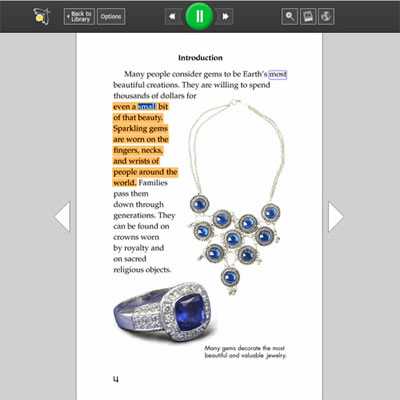An explosion in the number of students with learning disabilities prompts efforts to make assistive technology available campus-wide, not just in the disabilities office.
 ADHD diagnoses have increased 53 percent in the last decade, according to the Centers for Disease Control and Prevention. A 2009 analysis from the General Accounting Office (GAO) indicates that the number of students with LD such as dyslexia has also risen, from 5 percent in 2000 to 8.9 percent by 2008.
ADHD diagnoses have increased 53 percent in the last decade, according to the Centers for Disease Control and Prevention. A 2009 analysis from the General Accounting Office (GAO) indicates that the number of students with LD such as dyslexia has also risen, from 5 percent in 2000 to 8.9 percent by 2008.
Over the past decade, higher education has seen a significant change in the kinds of disabilities faced by students. While the percentage of students with physical disabilities has dropped, there has been an explosion in the rates of students with learning disabilities (LD) and associated disorders.
Unfortunately, many of these students must cope with more than one learning impairment: Up to a third of students with LD have also been diagnosed with ADHD, for example.
One face among all the statistics is DeAnna Guetschow, who was diagnosed with dyslexia tendencies and ADHD as a student at Adrian College in Michigan.
“It was as if the dyslexia and ADHD ganged up against me,” recalled Guetschow, who graduated in May with a major in studio arts and a minor in English. “For example, I would misread a word like ‘succor’ as ‘soccer.’ Then I would think about how they call it football in Europe, and how I hated football in high school because the players were jerks. The next thing I know, it’s four hours later and I’m thinking about iced crickets in Thailand.”
Assistive technology has been available for years for LDs like dyslexia, but it’s also proving useful in helping ADHD students like Guetschow organize their work and stay on track. The disabilities specialist at Adrian College introduced Guetschow to Kurzweil 3000, an integrated literacy solution originally purchased by the school for a blind student. The product originated as a text-to-speech program that has evolved to incorporate additional supports for comprehension and writing, including mechanisms (such as writing templates) to help students marshal their thoughts.
(Next page: Key features of new assistive tech)
Kurzweil 3000 can read web-based text as well as a wide range of digital file formats, including PDFs. Each word in the text is highlighted as it is read aloud, allowing students to follow along. “Because the Kurzweil kept reading, if I had a dyslexic moment it didn’t really allow for that ADHD train of thought,” explained Guetschow. “It would say the word properly even if I misread it, and then it would keep going.”
The ability to vary the program’s reading speed also served to keep Guetshow’s ADHD in check. “When I first started using the Kurzweil, it was reading too slowly,” noted Guetschow. “I started reading ahead of it and I could see bad things happening that way. Being able to adjust the speed was really helpful.”
The software was a game-changer for Guetschow, who had seen her grades slip as the coursework became harder in her junior and senior years. Earlier coping strategies, such as color-coding all her coursework and using a study buddy to keep her on task, were no longer effective. “By senior year, they didn’t cut it,” said Guetschow. “It would literally take me the entire weekend to do the readings for one class. I needed help.”
As at many schools, the Kurzweil 3000 program at Adrian College is installed on computers in the disabilities office. And therein lies one of the biggest challenges facing institutions trying to support the rising number of students with LD: Unlike Guetschow, many students with LD won’t set foot in their school’s disabilities office.
Indeed, only a quarter of students who received special services in high school end up telling their colleges about their disabilities, according to the 2014 State of Learning Disabilities report from the National Center for Learning Disabilities (NCLD). After years of being treated differently in grade school, adds the GAO analysis, many students simply want a fresh start without being labeled as having a disability.
A new web-based literacy solution from Kurzweil Educational Systems known as Firefly may finally make it possible for these students to obtain literacy assistance whenever and wherever they need it. While Firefly has many of the same features as Kurzweil 3000, it’s accessible via any browser as well as via an iPad app. Cloud-based storage makes course materials accessible from any device. Although users must currently subscribe to Kurzweil 3000 to obtain Firefly, the company ultimately sees it as a standalone product.

For Guetschow, who signed up for a free trial of Firefly during her senior year, the benefits were immediate. For starters, she was no longer a slave to the disabilities office’s hours. “The library is open twice as long as the disabilities office,” she noted. “I could go to the library to scan my textbook pages as PDFs, put them on a flash drive, and then have Firefly read them off that. It was fantastic. I could do my homework at home at 3 o’clock in the morning. I didn’t have to rely on the disabilities office as much.”
(Next page: Web-based solutions for any institution)
For colleges and universities, Guetschow’s experience is likely music to their ears. Not only do web-based solutions let IT off the hook when it comes to installation and upgrades, but their ubiquitous nature may help schools reach those students who really need assistance but—for whatever reason—fail to seek it.
Instead of requiring students to visit the disabilities office, for instance, schools could simply inform students of the availability of such products during orientation and let them access them on their own—from their own devices.
Even though a much broader audience has been using assistive literacy products for years, the shift away from the disabilities office may also help change perceptions that such tools are exclusively for students with LD. “We now have many college students using Kurzweil 3000 with or without disabilities,” said Cami Griffith, senior sales executive at Kurzweil Educational Systems. “Students are off on their own for the first time and the amount of reading material required is huge. They need very good organizational skills. These are challenges that can affect people whether or not they have a disability.”
Most schools, though, would be happy to reach those students with LD who are currently flying under the radar. Indeed, the hope is that technology like Firefly can reverse one of the most distressing statistics of all: Only 41 percent of higher ed students with LD actually go on to graduate compared with 52 percent of the general student population, according to the NCLD report.
Thanks to the help she received from Firefly and her school’s disabilities specialist, DeAnna Guetschow did receive her diploma. “I had really good grades my senior year,” recalled Guetschow, who is teaching introductory art classes at Kalamazoo Valley Community College but is looking to build a career in advertising. “I don’t need Firefly in my current job, but it would be worth the yearly expense if I need it in the future.”
Andrew Barbour is an editorial freelancer with eCampus News.
- 25 education trends for 2018 - January 1, 2018
- IT #1: 6 essential technologies on the higher ed horizon - December 27, 2017
- #3: 3 big ways today’s college students are different from just a decade ago - December 27, 2017

